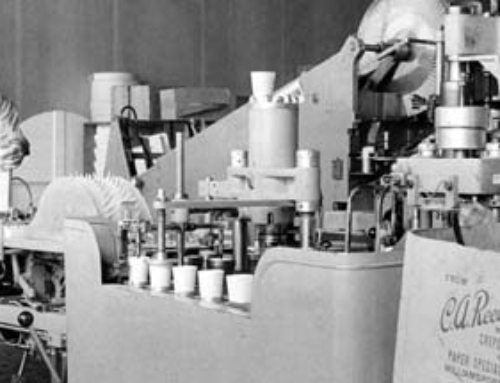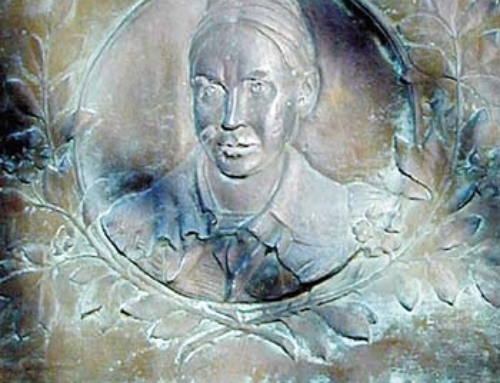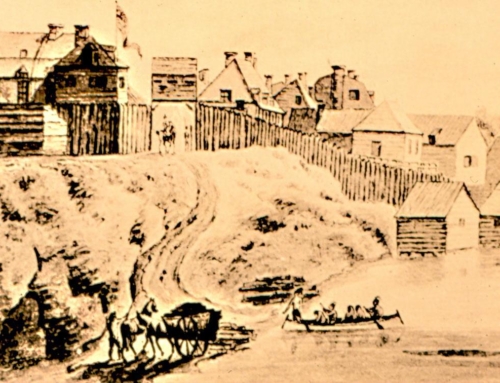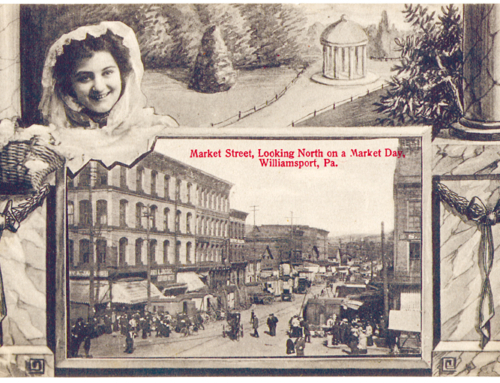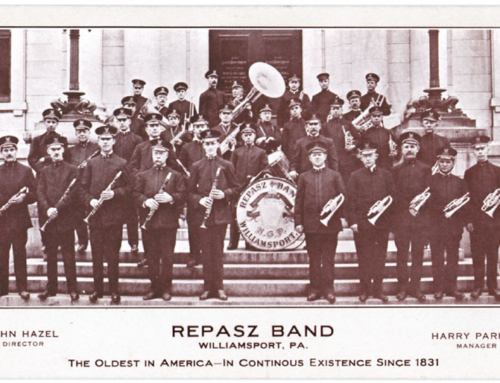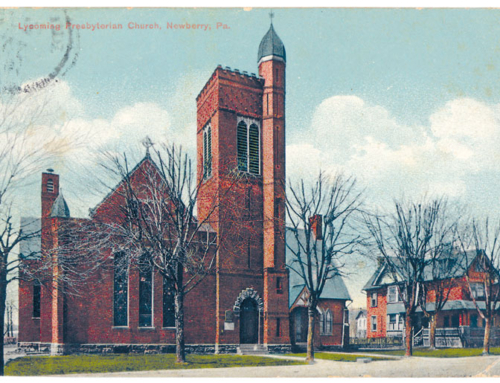
Russell Tavern served as the first courthouse of Lycoming County, PA.
According to historians, when founder Michael Ross surveyed the 111 acres that became Williamsport, he could not have imagined that his small community would grow from a one-building village to the county seat of Lycoming. During its first 100 years, the region experienced quite a few “memorable firsts.”
They include:
* The first white man to enter the region is believed to have been Frenchman Etienne Brule. He left Canada in 1615 to help secure territory for New France. He was taken captive by Indians near present-day Muncy and later escaped.
* The first houses were three, rude log cabins built in 1761 on clearings owned by Bowyer Brooks, Robert Roberts and James Alexander in present-day Muncy.
* The first grist mill was erected by John Alward in 1772 on Muncy Creek, just west of the Muncy hills.
* The first fatal hunting accident occurred in 1769, when Joseph Jacob Wallis, half brother of Samuel Wallis, land speculator and one of the county’s earliest distinguished citizens, mistook William Beaver for a bear along Muncy Creek.
* Probably the first person buried in what became a formal cemetery was the same unfortunate William Beaver, who was buried in what became Hall’s Cemetery.
* According to John F. Meginness’ “History of Lycoming County,” “To the borough of Muncy goes the credit of having the first habitations erected by white men upon her site in Lycoming County.”
* The first white person born west of Muncy Hills was Mary Scudder on May 21, 1771. Her mother, Susan, was the first woman to settle in Lycoming County. She and her husband, John, came to the area from New Jersey.
* The first white male born west of the Muncy Hills was John Lukens Wallis, son of Joseph Jacob Wallis, in 1773.
* The first public road through Lycoming County was constructed about 1775. It followed Indian trails along the Susquehanna River between Fort Augusta (Sunbury) and the mouth of Bald Eagle Creek (Lock Haven).
* The first practicing physician in the county was Dr. Benjamin Allison. As early as 1777, he was paid to tend to members of the militia wounded by Indians and Tories.
* The first name considered for this county was Jefferson. Susquehanna and Muncy also were considered and rejected in favor of Lycoming, after the stream long known as the bloody edge of disputed Indian territory.
* In the first election in Lycoming County on Oct. 16, 1795, Samuel Stewart was elected the county’s first sheriff and John Hanna, Thomas Forster and James Crawford were elected the first county commissioners.
* The first person to represent Lycoming County in the U. S. Congress was Andrew Gregg. He served until 1807. William Hepburn was the first to represent the county in the state senate.
The first county representatives in the state house were Flavel Roan, Hugh White and Robert Martin.
* The first house to be built in Williamsport also was its first inn. It was built by James Russell of logs in 1786 at the northeast corner of East Third and Mulberry streets.
* James Russell, son of William Russell, was recorded as the first person born in Williamsport in 1796.
* The first church erected in the county was the Newberry Presbyterian, now Lycoming Presbyterian Church on Arch Street. The date of construction is unknown but it is said to have existed as early as 1786, and there is evidence that Presbyterian services were held along Lycoming Creek as early as 1746.
* The first sawmill in the county was built four miles up Lycoming Creek by Roland Hall in 1792.
* The first brewery was established in 1854 by a Mr. Huffman, who sold it in 1865 to Henry Jacob Flock. The Flock Brewery operated into the 1940s.
* In 1796, the first schoolhouse was built of logs in the area to the rear of what became the county courthouse. Its first schoolmaster was Caleb Bailey.
* The first post office opened in 1799 at the corner of Third and State Streets in Williamsport. It later became a saloon.
* The first store in Williamsport was opened in 1801 by William Winter at the corner of Third Street and South Alley.
* Henry Lenhart opened the first drug store in Williamsport in 1815 at the southeast corner of Third and Pine streets.
* The first train came through the county in 1839 when a railroad connecting Williamsport and Ralston opened along Lycoming Creek.
* The county built the first bridges across Loyalsock and Lycoming creeks in 1822 and 1823. Both were timber-arch structures.
* The first bridge over the river at Williamsport was a toll bridge that opened in 1849. It was built at Market Street by the state at a cost of $23,797.
* H.R. Rhoads owned the first telephone in Williamsport in 1879. The first telephone exchange opened on May 1, 1879 with 25 subscribers. Williamsport’s was the second telephone exchange established in the state of Pennsylvania after Erie.
* The first cemetery established specifically to be a cemetery was on the site of the present-day Calvary United Methodist Church and also the site of the Plum Thicket Massacre of June 10, 1778. Victims of that massacre were interred there for a time.
By Lou Hunsinger Jr., Williamsport Sun-Gazette


